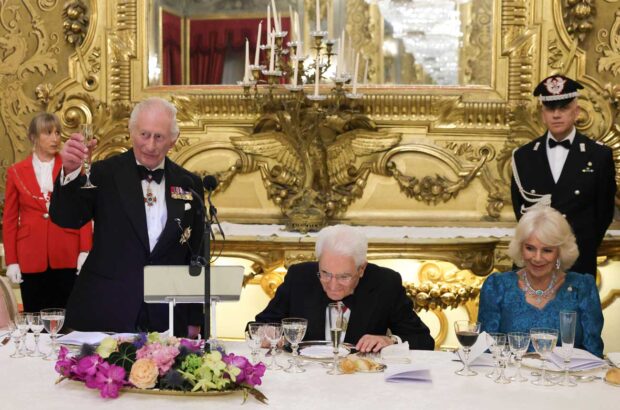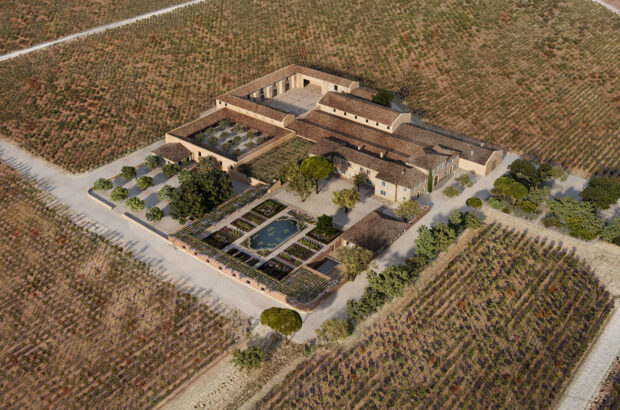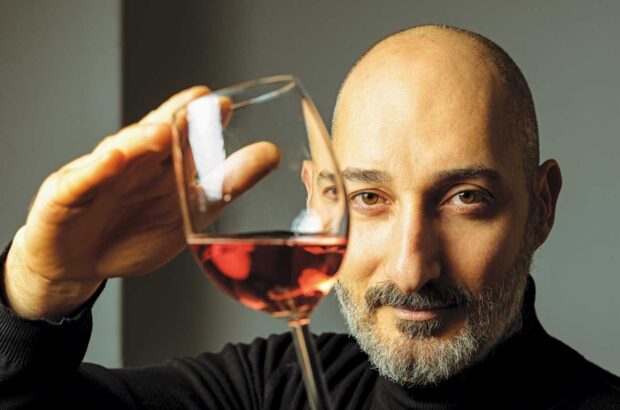The ex-Arsenal defender and part-owner of the Riverside Brasserie tells FIONA SIMS of the dangers of developing a taste for fine wine
The ex-Arsenal defender and part-owner of the Riverside Brasserie tells Fiona Sims of the dangers of developing a taste for fine wine
Head down to the Riverside Brasserie in Bray, Berkshire, and you might catch Lee Dixon serving tables. Yes, one-quarter of one of the most solid back fours in Premiership history – who played over 600 football games for Arsenal, and was capped 22 times for England, now a regular on our TV screens on Match of the Day – likes to play restaurateur every once in a while. He partowns the place, you see, and can’t resist playing shop. But the best bit, he says, is the wine tasting. Dixon often gets together with the staff to help them taste the latest vintages and new finds.
‘It’s important to get the balance right – so many wines taste very similar these days,’ he laments. Then he’ll sit down to work out a price for each bottle – ‘I particularly like that bit,’ he grins. And serving tables, too? ‘It’s better than just sitting in the corner looking like I own the place.’
He invested in the Riverside Brasserie when it first opened in 2002 under chef and co-owner Heston Blumenthal, who is a friend. Two years later, Blumenthal moved on to bigger things (he needed to release some cash for his pub, the Hinds Head), but Dixon stayed with it. Was it the restaurant business that got him interested in wine?
‘No, it was another team-mate, David Platt, who got me into wine 10 years ago. We were talking about investments, and one day, he mentioned wine. “You can’t lose money on Bordeaux,” he said, so I started looking into it.’
Born in Manchester, Dixon’s family didn’t drink wine when he was growing up. ‘It was all beer – mild and bitter. Then David gave me a bottle of Sassicaia and said, “Have that with your dinner” – I’d never heard of it. I took it home and opened it up with a plate of spag bol – and thought “Wow!” The thing is, I got a taste for it, but you can’t drink it every night, can you?’
Dixon’s first point of contact in the wine world was John Armit, the London-based merchant (and Chelsea fan), who managed to secure three cases of Sassicaia for Dixon, along with a few other things: Bordeaux mostly, plus some white Burgundy. Among them were the Chambertin Clos de Bèze, Faiveley 1993, Grands Echézeaux, Romanée-Conti 1999, La Tâche, Romanée-Conti 1995, and a few bottles of Lafite Rothschild 1990. On the white front, he stocked up on Puligny-Montrachet, Louis Carillon 1999 and Bâtard-Montrachet, Leflaive 1997.
‘I started to build up quite a portfolio of wines. When I’d got up to about 2,000 bottles, I had a Spiral Cellar built at my house – my other house,’ he quickly points out (that was during his first marriage – he has since married again, to Yolande, a dancer).
‘I loved that cellar. I had great fun filling it – I was like a kid in a candy store.’ Even in those days, Premiership wages were pretty healthy – so what kind of money was he splashing out per bottle? ‘On average, I spent about £100 a bottle. But I’ve got a smaller cellar these days – I don’t buy quite so much now, or quite so expensively,’ he reveals.
So where does he like to buy wine these days? ‘I’m still pretty loyal to Armit, but I’ve bought a lot over the internet recently. My wife goes off to the supermarket and buys lots of drinkable Merlot, although I prefer simple supermarket whites, but I also drink more expensive reds such as Ornellaia – I’ve got 2000s through to 2003s.’
What’s in his fridge right now? ‘A couple of bottles of 2006 François Raveneau Grand Cru Chablis, and a halfbottle of 2004 Pieropan Le Colombare, Recioto di Soave – but I don’t know where that one came from,’ he says.
Dixon joined chef Heston Blumenthal on a trip to Burgundy, and the pair hung out at Domaine de la Romanée-Conti and JF Coche-Dury, tasting their way through the latest vintages – and sampling some of the much rarer older wines. ‘I think that has to be the best wine moment I’ve ever had,’ says Dixon, ‘standing in DRC’s private cellar, with Heston, sipping a powerful, golden-coloured, and extremely rare 1988 Bâtard-Montrachet made just for the family.’
Dixon has been getting into Californian reds of late – partly because he has a holiday house there, a five-minute bike ride from the beach in Santa Monica. ‘I love the coastline; the light is amazing,’ he enthuses. And he promises to see Napa on his next trip, when he will finally get to eat at The French Laundry.
Dixon cites Zuma restaurant in London’s Knightsbridge as a favourite, along with The Square and The Fat Duck. ‘I used to talk about wine a lot more – but then I remembered that I don’t know much about it, so I’ve shut up. I’m not a wine snob. Although, if a mate brings round a bottle of Hardy’s, it will end up in a stew – you’ve got to have certain standards, haven’t you?
Tasting notes:
What did you drink last night? Half a bottle of Puligny-Montrachet and three glasses of sake at Zuma with Heston [Blumenthal]
What’s your desert island wine? 1982 Château Lafleur – I’ve never smelled anything like it.
Who would you drink it with, and where? With my wife, Yolande, in Oahu, Hawaii.
What’s the most you’ve ever spent on a wine? £750: three bottles of 1983 Pétrus
Written by Fiona Sims






